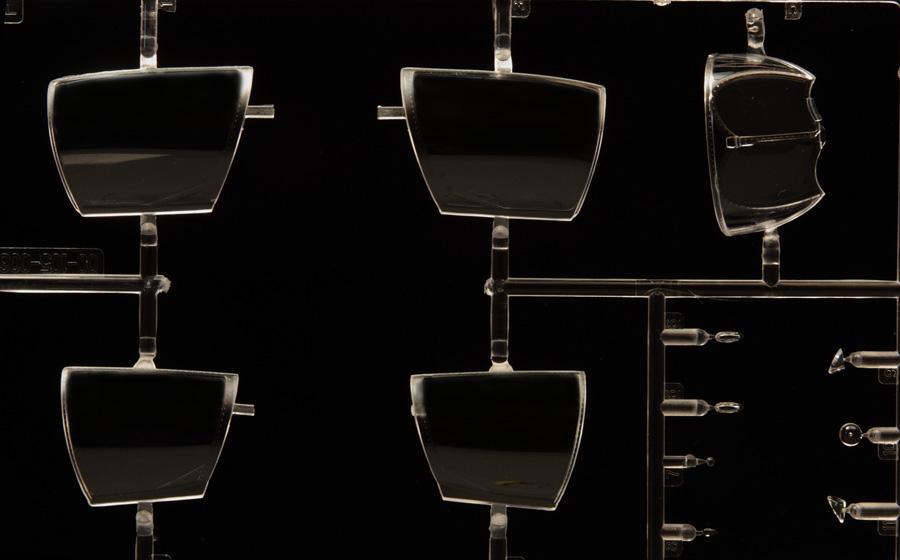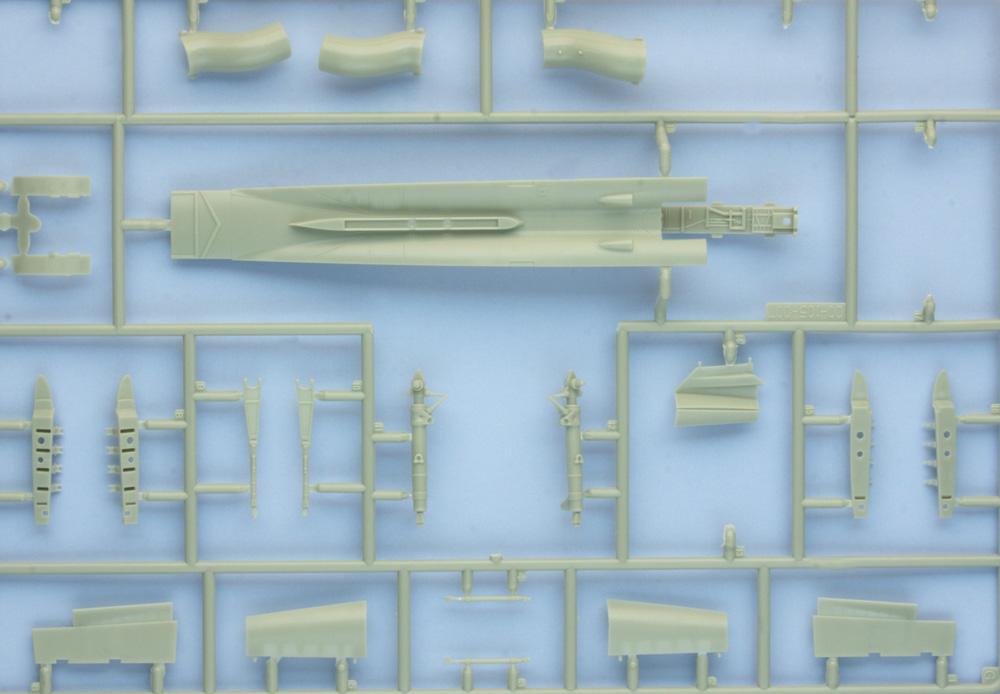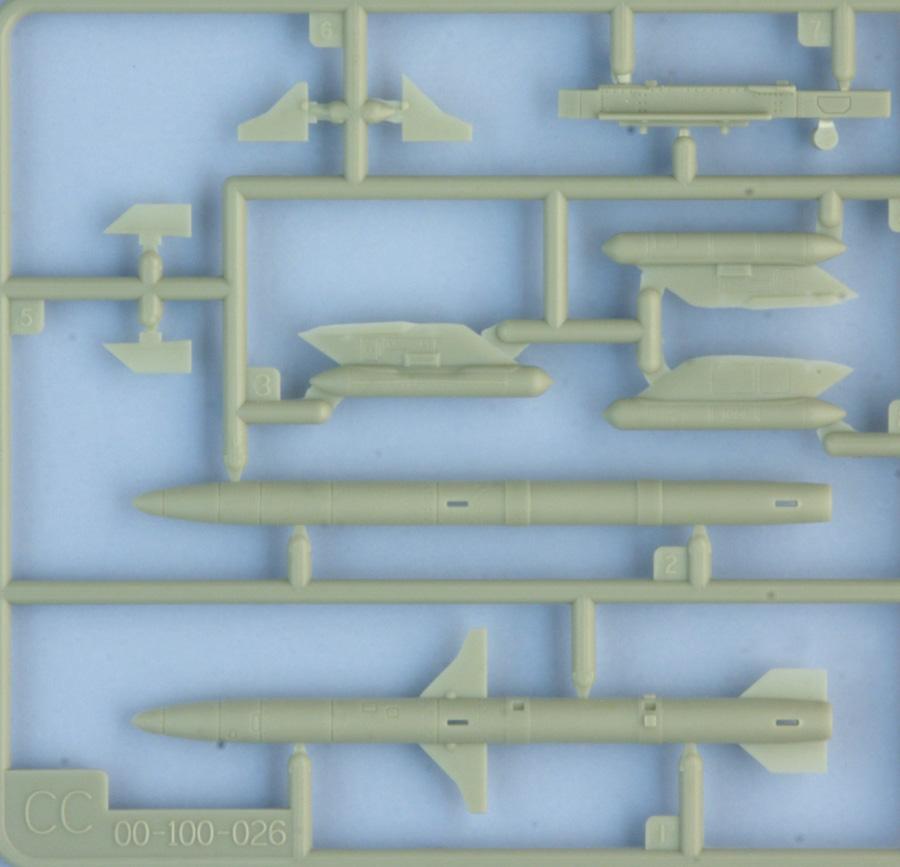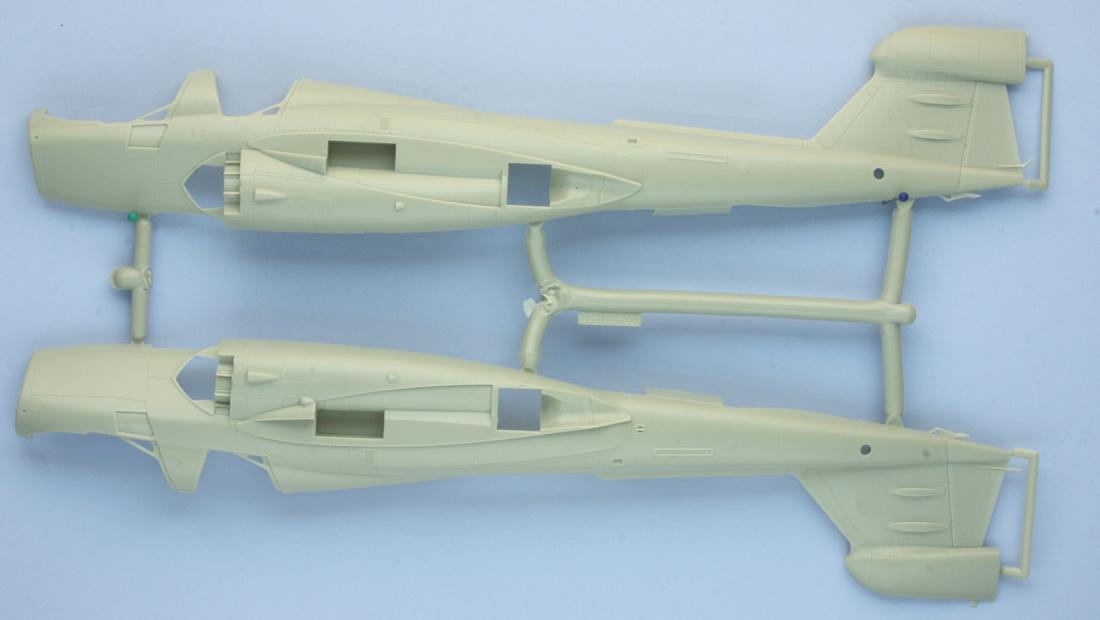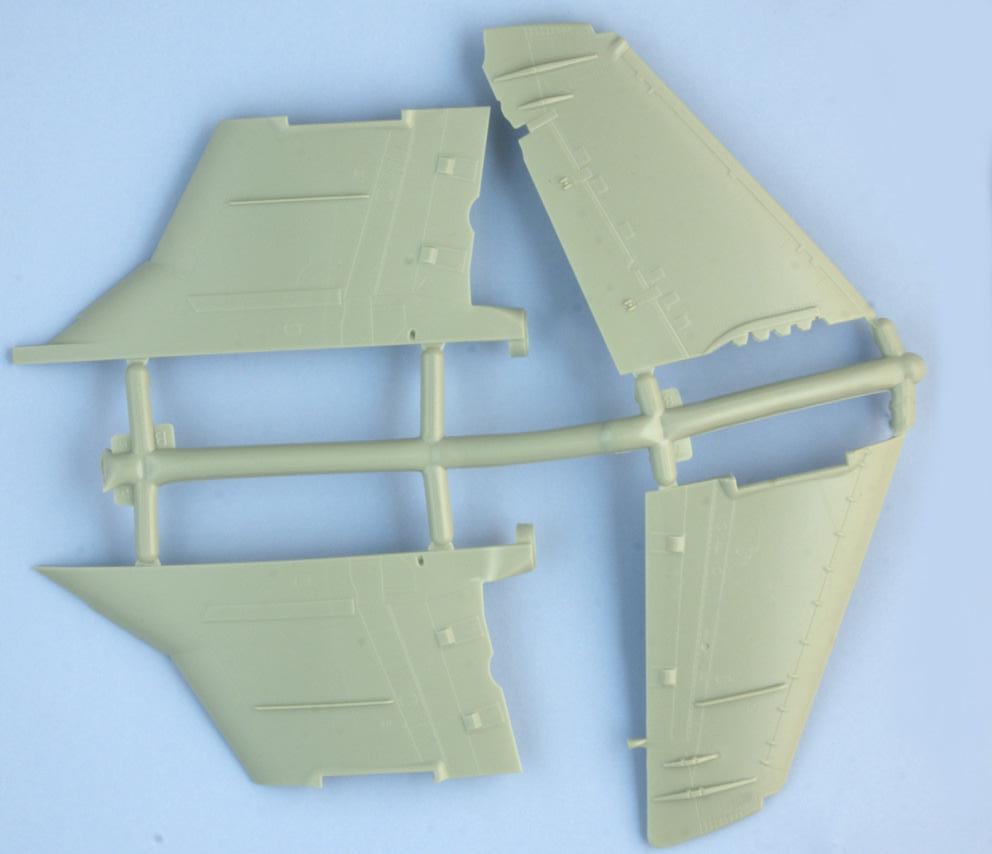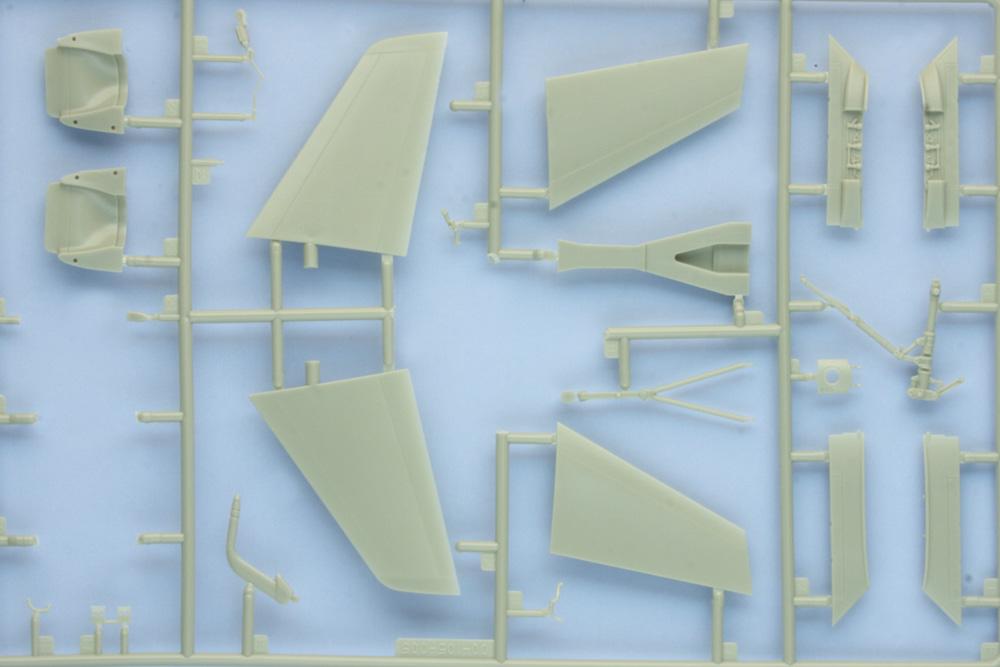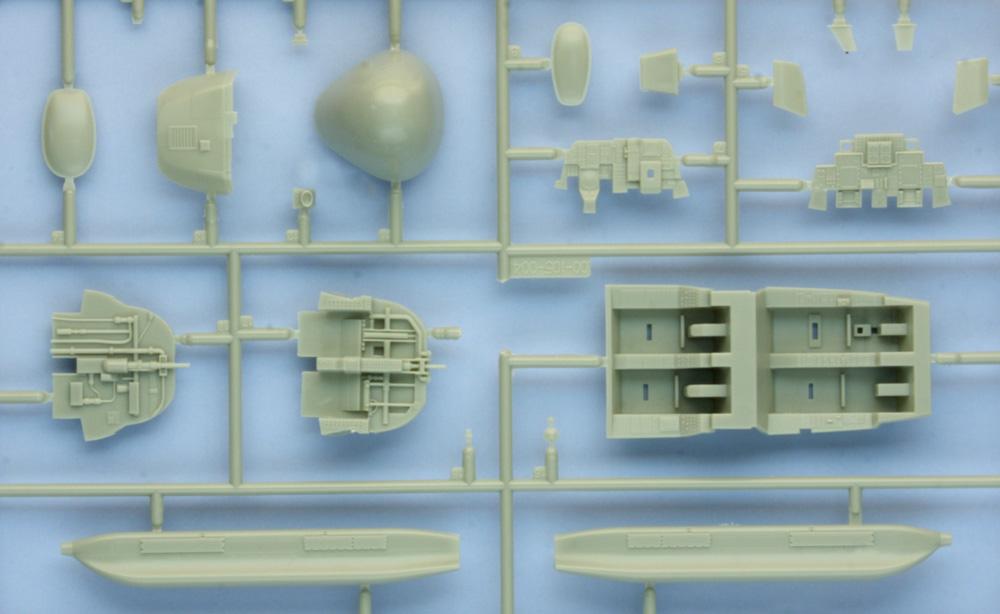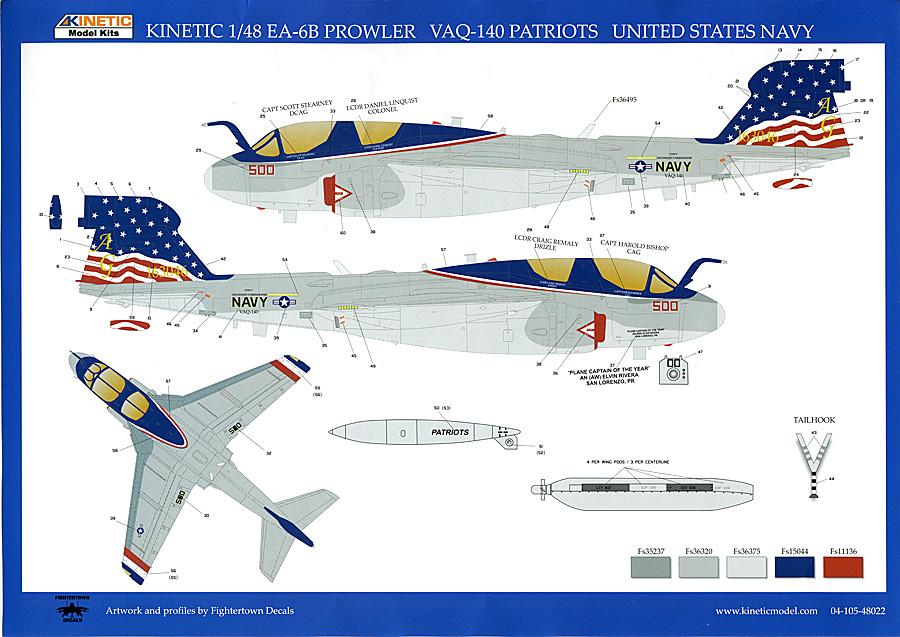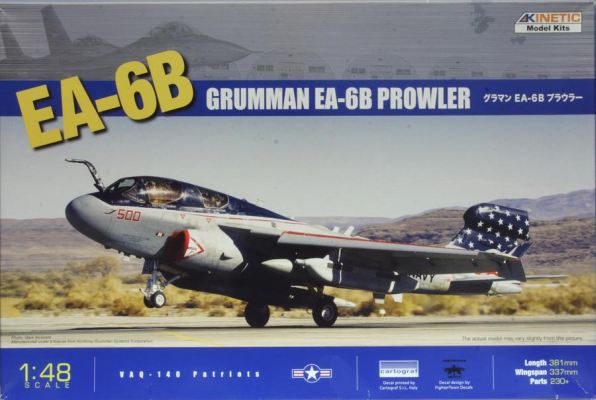
Kinetic 1/48 EA-6B Prowler
By Gerry Nilles
History
The EA-6B "Prowler", the four-seat Electronic Counter Measures (ECM) derivative of the A-6 Intruder, is based on a design that is now over fifty years old.,. As such, one could probably make the case that the Prowler is to the U.S. Navy what the B-52H is to the USAF. Both aircraft designs are well over a half-century old and in each case; the final production version is still in front line service today. As a side note, Boeing completed B-52H production deliveries around 1963, which is about the same time the A-6A entered squadron service.
The Prowler's development came about because of the increasingly sophisticated air defense systems being deployed by the North during the Vietnam War. Early on in the conflict, The US Navy's need for much more aggressive Electronic Counter Measures in the form of an aircraft capable of tracking, jamming, and potentially destroying advanced Soviet built Surface to Air Missile (SAM) sites became brutally apparent as combat losses grew to unacceptable rates. Choosing to build upon both a proven and combat tested airframe as well as commonality, the A-6, with its heavy load carrying capability, became the unquestioned candidate for this upgrade.
The initial A-6 ECM offering, the EA-6A, retained the two-seat configuration of the Intruder having the bombardier's position reconfigured with radar monitoring and jamming equipment. Most notable, from an appearance standpoint, the EA-6A could be distinguished from standard Intruders by its slightly longer nose section, the large antenna bulge at the top of the vertical stabilizer and the wing stores pylons mounting large self-powered ECM pods or an anti-radiation missile. Twenty-seven EA-6As were built many of which were assigned to US Marine Corp squadrons. Although successful to a point, it soon became apparent that something more than the single operator approach was needed. The complexity of the mission dictated a much more comprehensive ECM aircraft, which translated into two additional ECM stations. Building upon the experience learned with EA-6A project the EA-6B or Prowler development came about. The standard A-6 fuselage became longer to accommodate the four-place cockpit, which in turn required some modifications to the wings. The EA-6B retained the large antenna bulge at the top of the vertical stabilizer as well as the self-powered ECM pods. Also, and understandably, a number of additional antennas and minor aerodynamic changes appeared on the airframe. The Prowler entered operational service in the early 1970 during the Vietnam War, and is still going strong today due to a series of Improved Capability updates (ICAP) the most recent of which being ICAP III. The EA-6B has participated in almost every conflict that involved air units of either the US Navy or Marine Corp since its introduction close to 40 years ago. Although currently in the process of being replaced, development delays with it successor, the EA-18G Super Hornet "Growler", have kept the EA-6Bs active a while longer.The Kit
Before I begin, I should note that I am going to, for the most part, refrain from making comparisons to the only other 1/48 scale kit of the Prowler and evaluate this kit on its own merits. That said, I am starting this review with the positive points.Overall, the kit looks nicely done. Molded in medium gray plastic and flash free the quality of the engraving is not only well detailed but also just about right being not to heavy or light. Kinetic has obviously done its homework in that the most current, re-winged ICAP III Prowlers, (which their kit represents) have composite wings and as such no panel lines. I also should note that Kinetic kit has the correct wings for the EA-6B, which is different from the Intruder wing, (see history) a distinction that the other Prowler kit did not make.
Moving on to other areas, the cockpit detail looks good and unless one is into super detailing the kit parts should satisfy most modelers. Likewise, the detailing of the optional folded wing feature is not only appealing but also well done. Other areas such as the landing gear, although lacking some finer details are still well within the acceptable range. The clear parts are crisply cast and distortion free.As for wing stores the kit includes two of the latest model ECM pods, two fuel tanks, and one AGM-88 anti-radiation missile, all nicely done. Last, the kit includes a well illustrated, 12-page, parts map and assembly guide that looks to be both easy to understand and follow.
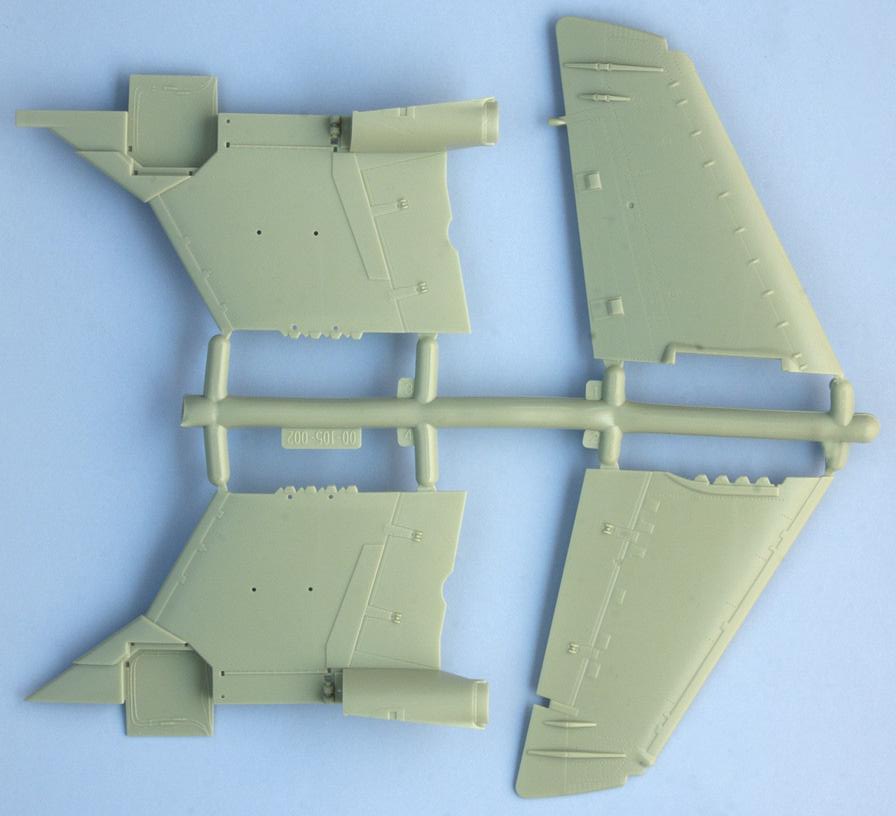
As for negatives the most notable item are the wing fences. First off, the outboard fence on the left (port) wing is missing completely. In addition, and based on photographic references all three of the existing fences look like they are not nearly tall enough, especially those on the inboard wings. However, the other 1/48 EA-6B kit's wing fences look to be the correct shape and height and as such, useful as a pattern for correcting the problem.
The next nit is the fact that there are some minor sink marks. The most apparent of these being on the tops of the horizontal stabilizers where they join up with the pin that secures them to the tail assembly. There is some fine detail in this location so use caution when filling. As mentioned above the cockpit detail is very acceptable. However, neither shoulder harnesses nor lap belts are included so aftermarket ones should be a definite consideration. As for the landing gear detail, I have read that some modelers have grafted the gear from the other Prowler kit onto this one because of its better level of detail. Personally, that seems like a rather expensive approach when some fine magnetic winding wire, available at your local electronic parts supply store, makes for great looking hydraulic lines.Markings
The kit comes with only one set of marking for the very colorful, VAQ-140 "The Patriots" CAG aircraft from the USS Eisenhower. Having used Kinetic decals in the past, I have found them to be of good quality.Conclusion
This looks to be a good and accurate kit, with the exception of the very fixable wing fences, along with the need for some minor extra details in the cockpit and on the landing gear. The folding wing feature is a definite plus as is the fact that it is an ICAP III version. Thanks to Stevens International for the review sample.

